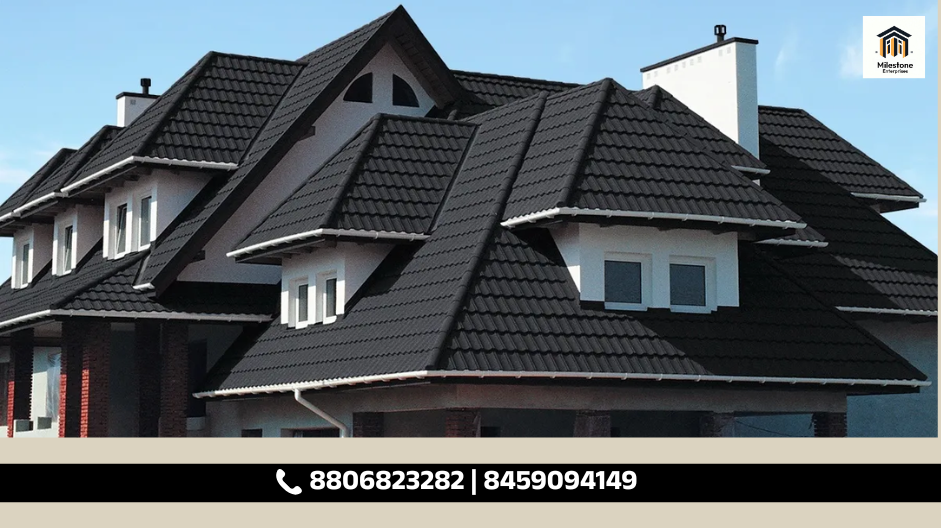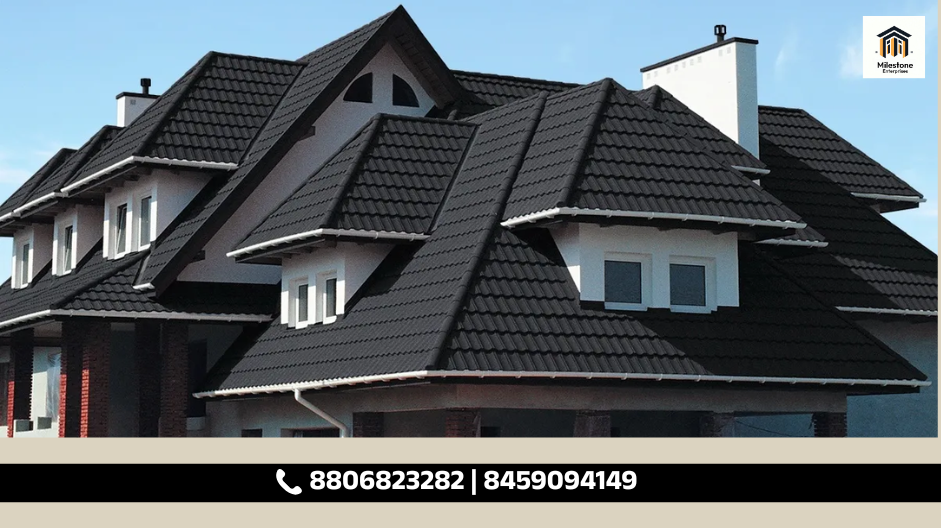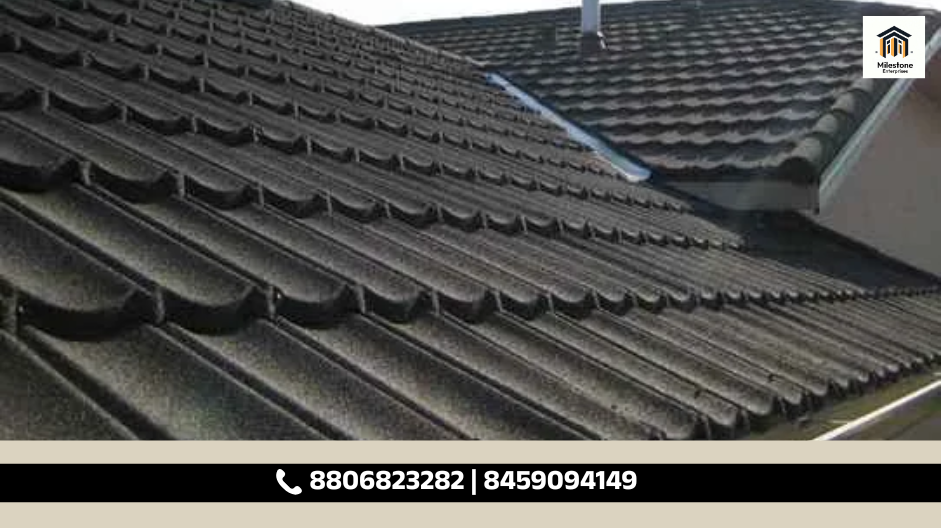🧱 What Are Metal Shingles?
Metal shingles are a type of roofing material made from metal sheets but designed to look like traditional roofing tiles — such as slate, clay, or wood shakes.
They combine the strength and durability of metal with the classic appearance of other roof types.
🏭 Making / Manufacturing Process of Metal Shingles
 Step-by-Step Process:
Step-by-Step Process:
Raw Material Selection
High-quality steel are chosen.
Cleaning & Treatment
- Coils are cleaned to remove oil, dust, or impurities.
Galvanizing / Coating
- Metal is coated with zinc (galvanized) or aluminum-zinc alloy (Galvalume) for corrosion protection.
Base Painting / Primer
- A primer coat is applied for paint adhesion and surface protection.
Embossing / Press Forming
- Using molds, the sheets are pressed into tile-like patterns (like slate, clay, or shake textures).
Color Coating / Finishing
- High-quality PVDF or polyester paints are applied and baked for UV protection and shine.
Cutting & Packaging
- The sheets are cut into interlocking sizes, inspected for quality, and packed for delivery.



🎨 Design & Appearance
Metal shingles can be coated or painted in various textures and colors to mimic:
- Slate roofs
- Clay or terracotta tiles
- Wood shakes
- Stone-coated finishes
- Matte or glossy metallic looks
So visually, they look like traditional roofs, but they’re much stronger and lighter.
⚙️ Materials Used
Metal shingles can be made from different metals, such as:
- 🧲 Steel (Galvanized or Galvalume) – strong, affordable, long-lasting
- 🥈 Aluminum – lightweight and corrosion-resistant
💪 Advantages of Metal Shingles
|
Feature |
Description |
|
Durability |
Can last 40–70 years — 2–3 times longer than asphalt shingles |
|
Lightweight |
Much lighter than concrete or clay tiles |
|
Fire Resistant |
Non-combustible, provides high fire safety (Class A rating) |
|
Low Maintenance |
Needs minimal care due to protective coatings |
|
Weather Resistant |
Withstands heavy rain, snow, hail, and strong winds |
|
Energy Efficient |
Reflective surface keeps the house cooler (reduces AC cost) |
|
Eco-Friendly |
Fully recyclable and sustainable roofing option |
🌟 Benefits (Why People Choose Metal Shingles)
- Superior Longevity – One-time investment that lasts for decades.
- Enhanced Property Value – Adds premium aesthetic and resale value.
- Energy Savings – Reduces summer heat by up to 25–30%.
- Strong Return on Investment (ROI) – Although costly upfront, very low lifetime cost.
- Easy Replacement – Damaged panels can be replaced individually.
- Sustainable Roofing Solution – 100% recyclable and environment-friendly.

🏠 Common Uses
- Residential houses and villas
- Resorts or farmhouses
- Commercial or heritage buildings
- Architectural and designer roofs


🏗️ Installation Process of Metal Shingles
🔹 Step-by-Step:
- Roof Preparation
- Old roofing (if any) is cleaned or removed.
- A moisture barrier / underlayment (synthetic or felt sheet) is installed over the roof deck.
- Starter Strips
- Base edge metal strips are fixed to start the first shingle row.
- Panel Placement
- Metal shingles are placed in interlocking form, overlapping edges for waterproofing.
- Fastening
- Special screws or clips (corrosion-resistant) are used instead of nails.
- Panels are fixed to battens or directly on decking.
- Flashing & Ridge Caps
- Corners, valleys, chimneys, and joints are sealed with flashing to prevent leakage.
- Ridge caps cover the roof’s peak.
- Final Coating / Finish
- Optional color coat or protective coating applied after installation (for shine and protection).
✅ Installation Time: Usually 2–4 days for an average house (depending on roof size).
📊 Summary Table
|
Feature |
Details |
|
Material |
Steel, Aluminum, Zinc, Copper |
|
Lifespan |
25–100 years |
|
Maintenance |
Very low |
|
Energy Efficiency |
High (reflective coating) |
|
Fire Resistance |
Excellent |
|
Warranty |
25 years |
|
Installation Time |
2–4 days |
|
Recyclable |
100% |

